You can cut oranges into wedges, slices, or supremes. Learn the right way to cut an orange for a beautiful presentation every time.

What’s the right way to cut an orange? It may seem simple but knowing how to cut an orange in different ways can help you make your food look irresistable. The first two methods, wedges and slices, may be familiar to you, but have you ever cut orange supremes? It’s faanncy!!! Let's start with simple wedges.
Cutting Wedges
This is the easiest way to cut an orange and probably what you would do if you need to feed a bunch of kids a quick healthy snack. Some people cut the orange in half from top to bottom but I prefer to cut it in half through the middle.

If you cut top to bottom, the slices don't fan out easily when you are eating them. To cut an orange into neat wedges follow these steps:
- Get a firm grip on your orange and place it sideways on your cutting board.
- Cut the orange in half through the side, not top to bottom!
- Next, slice each half into 5 wedges. Hold the half at an angle and slice two wedges on either side of the center. The second slice you make should go straight down next to the center pith. You will be left with one uglier slice on either half but this is better than all the pieces having some membrane on it! (Don't serve them, just eat them later yourself.)
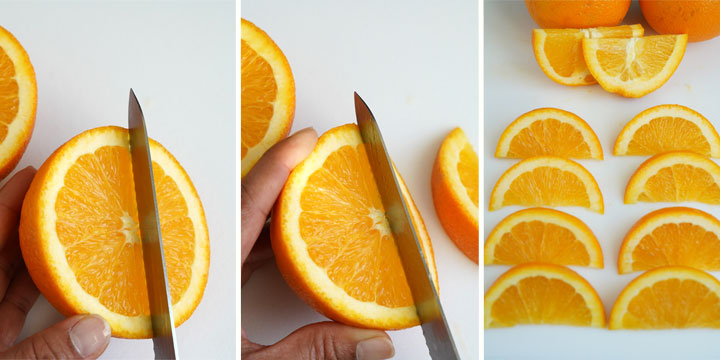
Cutting Round Slices
Place the orange sideways on a cutting board and with a firm grip and a sharp knife, begin by cutting off the top and bottom. Continue to cut the orange into the desired width of slices. Make skinnier slices if you are baking with orange rounds and thicker slices for an orange garnish.

Slices are great for garnishing mixed drinks and punches. You can even use them to decorate an orange flavored cake or candy them using my technique for making candied lemon slices.
Cutting Supremes or Segments
Supreming an orange is a fancy way of cutting an orange without any pith or membranes. These orange segments are perfect or adding to salads.
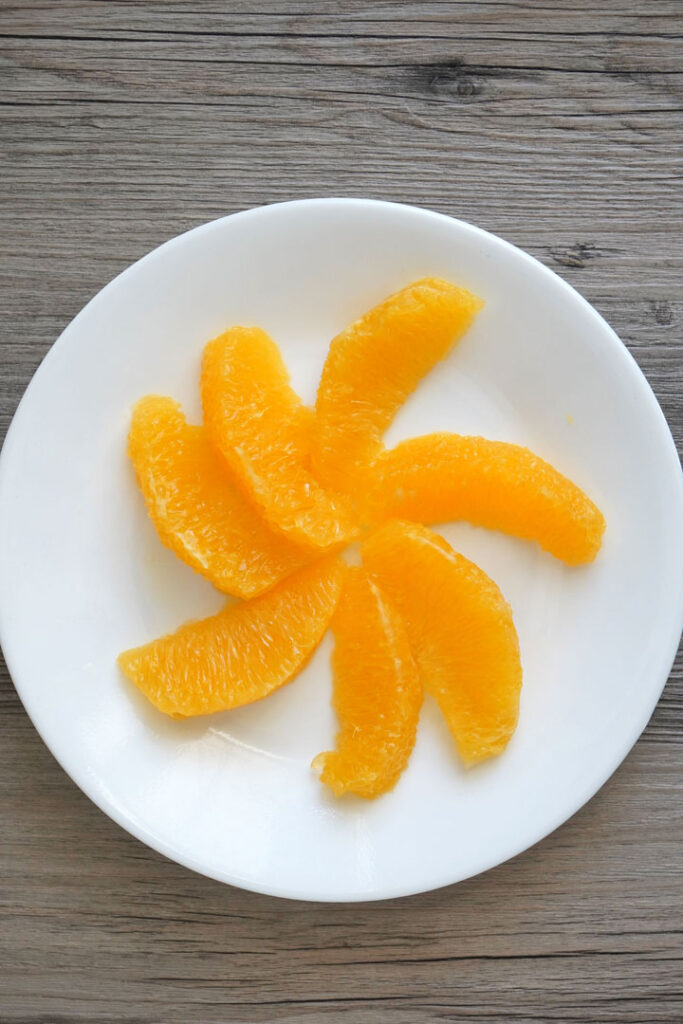
The key to cutting orange segments without any membrane is to use a very sharp knife. I personally prefer a sharp serrated knife. Using a slow sawing motion gives me the best control.
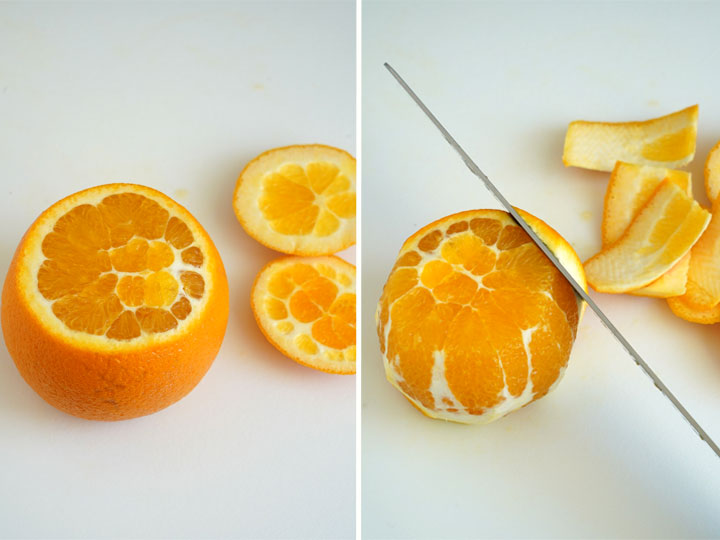
To cut orange segments, you must first remove the peel from all around. The simplest way to do this is to first cut off the top and bottom of the orange.
Next, cut the peel away by slicing downward from top to bottom all the way around the orange. (You can save the peel to make candied orange peel!)

Flip the orange over and clean up the sides with the knife until you are left with no peel around the orange. You should only see the white of the membranes in between the segments.
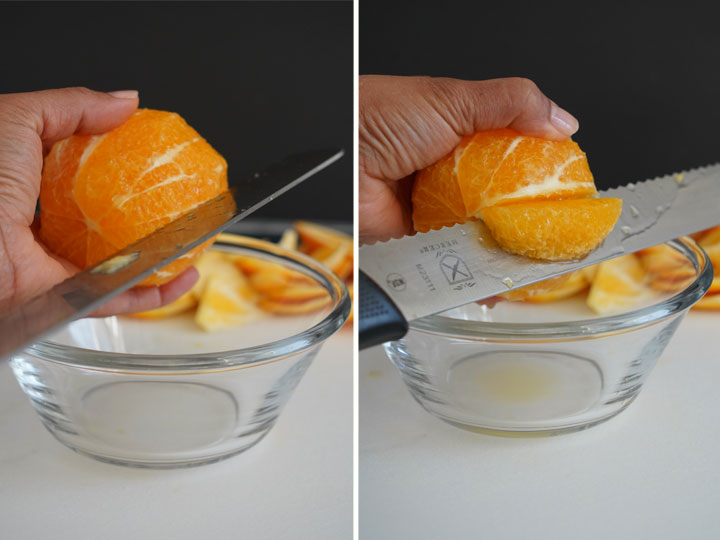
Hold the orange over a bowl and slowly cut directly next to each membrane surrounding the segments. The orange segment should just fall into the bowl. Continue to do this until you have removed all the segments.
You will be left with just thin membranes attached to the center of your orange. There may still be a good amount of juice in it, so be sure to squeeze it out and put good use to it.
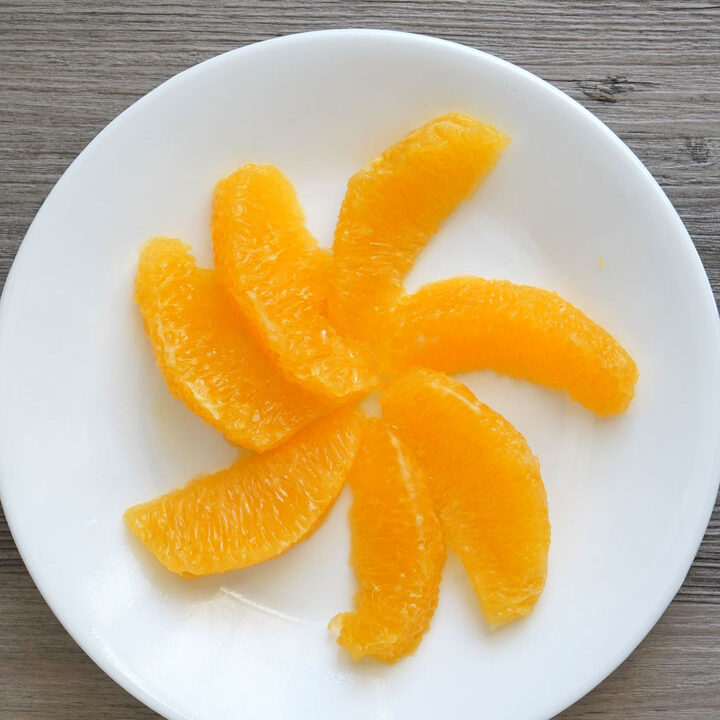
How to Segment an Orange
Segmenting or cutting orange supremes are a clean way to cut an orange. Use orange segments for salads and beautiful garnishes.
Materials
- orange or grapefruit
- bowl
Tools
- serrated knife
- cutting board
Instructions
- Using a serrated knife or very sharp knife, place the orange sideways on the cutting board and cut off the top and bottom of the orange.
- Place the orange on the cutting board so it's sitting on the flat part you just cut. Slice the peel away from around the orange by cutting downwards all around the orange.
- Flip the orange over and carefully slice off any remaining white pith.
- Hold the orange over a bowl and begin slicing directly next to a membrane. Make a second slice next to the opposite membrane on the slice. The slice should easily pull out and fall into the ball.
- Continue slicing next to each membrane all around the orange, letting each slice fall into the bowl.
Notes
Squeeze out any remaining juice for other uses.
Use this technique on any type of orange or grapefruit.







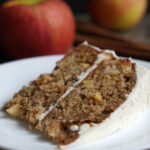



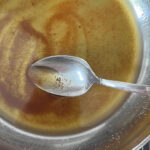


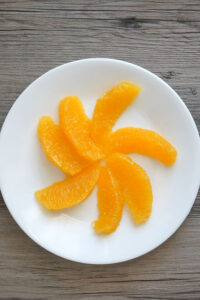




Comments
No Comments